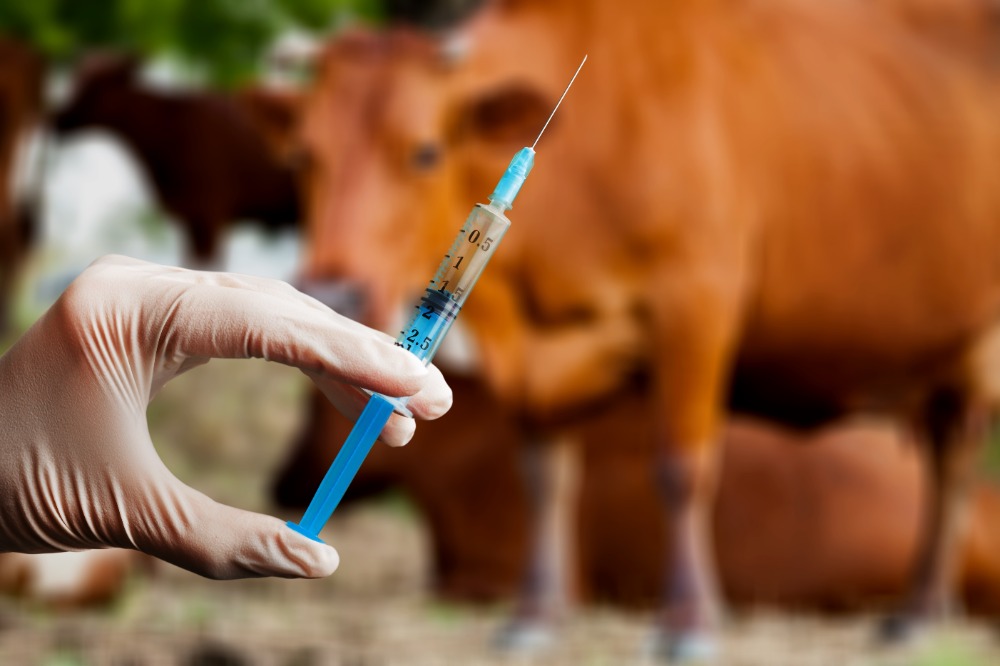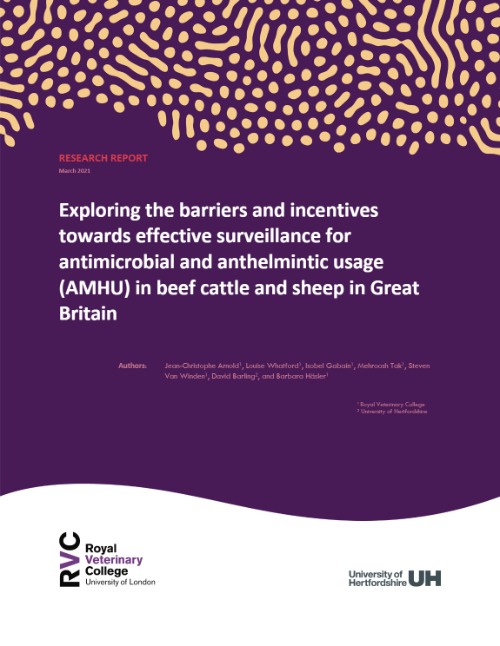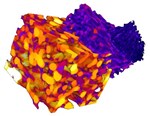Exploring the barriers and incentives towards effective surveillance for antimicrobial and anthelmintic usage (AMHU) in beef and sheep in Great Britain
Researchers from the Royal Veterinary College (RVC) in collaboration with the University of Hertfordshire have released a research report and brief highlighting the current challenges and potential incentives towards the effective implementation of antimicrobial and anthelmintic usage (AMHU) surveillance in beef cattle and sheep in Great Britain. The research forms part of the “achieving more sustainable British beef and sheep food systems in a changing environment” project which brings together multidisciplinary and One Health specialists from the RVC and the University of Hertfordshire, to contribute creatively to solutions for more sustainable beef and sheep food systems in Great Britain.
Antimicrobial and anthelmintic use (AMHU) in livestock production has increased over the last 50+ years and there are arguments that this has contributed to increased resistance to treatment. A recent paper published by the team reviewed the usage of, and resistance to antimicrobials and antiparasitics on beef and sheep farms in GB. The findings included a lack of data on usage, a lack of standardised metrics to quantify AMHU, and higher levels of resistance in GB beef and sheep compared to other livestock species. Antimicrobial usage (AMU) surveillance coverage remains low in the GB beef sub-sector and appears largely absent in the sheep sub-sector. Furthermore, no anthelmintic usage (AHU) data is captured for national surveillance. From the findings of the paper and the given situation, the team aimed to understand the current challenges that inhibit effective AMHU surveillance in these sub-sectors and propose potential strategies to how the system could be enhanced.
The research brought together key stakeholders implicated in AMHU surveillance in GB, through a series of workshops and interviews, to discuss the barriers and incentives towards effective AMHU surveillance in the sub-sectors from the perspective of their role in the system. Stakeholders included governmental and non-governmental organisations and industry bodies, beef and sheep farmers, and large animal veterinarians. The report identified some key challenges including:
- The relative heterogenicity of GB beef and sheep systems inhibits the collection and collation of AMU data for national surveillance
- The apparent lack of human health implications of anthelmintic resistance (AHR) limits political will towards implementing AHU surveillance
- Issues of quality and compatibility of collected AMHU data.
However, it also identified that voluntary mechanisms of reporting AMU data would be preferred in comparison to firm legal requirements, as such methods have proved successful in improving AMU surveillance coverage in the pig, poultry, aquaculture, and gamebird sub-sectors. Additionally, that the farmer-veterinarian relationship is considered vital for encouraging and supporting farmers to accurately collect and report AMU data, and that the ability for farmers to benchmark their AMU can serve as a powerful incentive towards these activities. Furthermore, it is hoped that the recent release of the Agriculture and Horticulture Development Board’s (AHDB) Medicine Hub for cattle and sheep, and proposed outcome-based payment schemes as part of changes in agricultural policy and accreditation schemes can serve targets towards strategies to enhance AMU surveillance, and implement AHU surveillance, in these sub-sectors.

From the findings, recommendations are proposed that address the issues of improving data collection and reporting and promote stakeholder coordination and cooperation in the development and implementation of strategies towards enhancing AMU surveillance, and potentially implementing AHU surveillance, in the sheep and beef sub-sectors of GB. The complete report and accompanying brief can be found at: Report: DOI: 10.34840/3R19-FC05, Brief: DOI: 10.34840/AX5J-EJ54.


